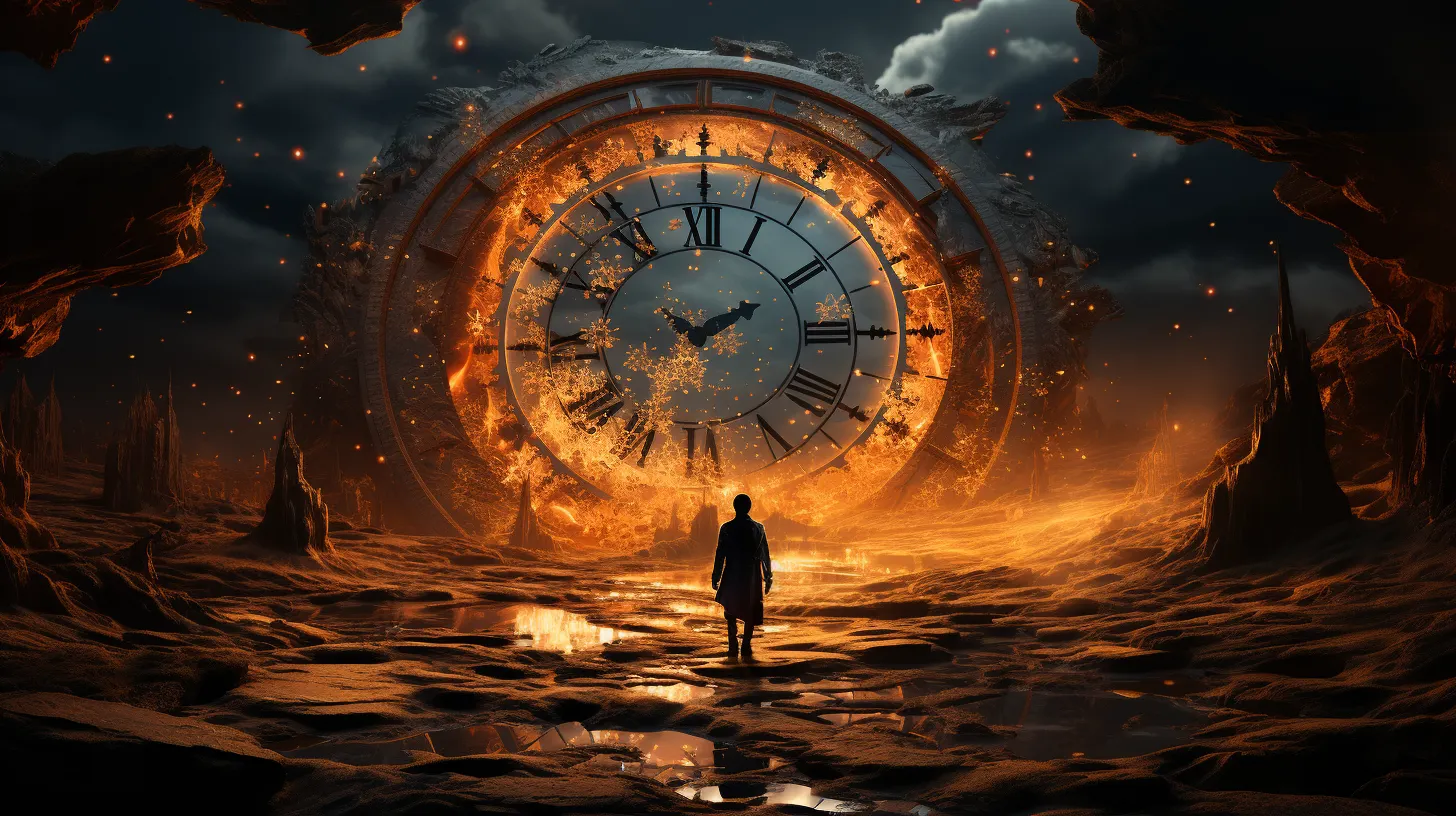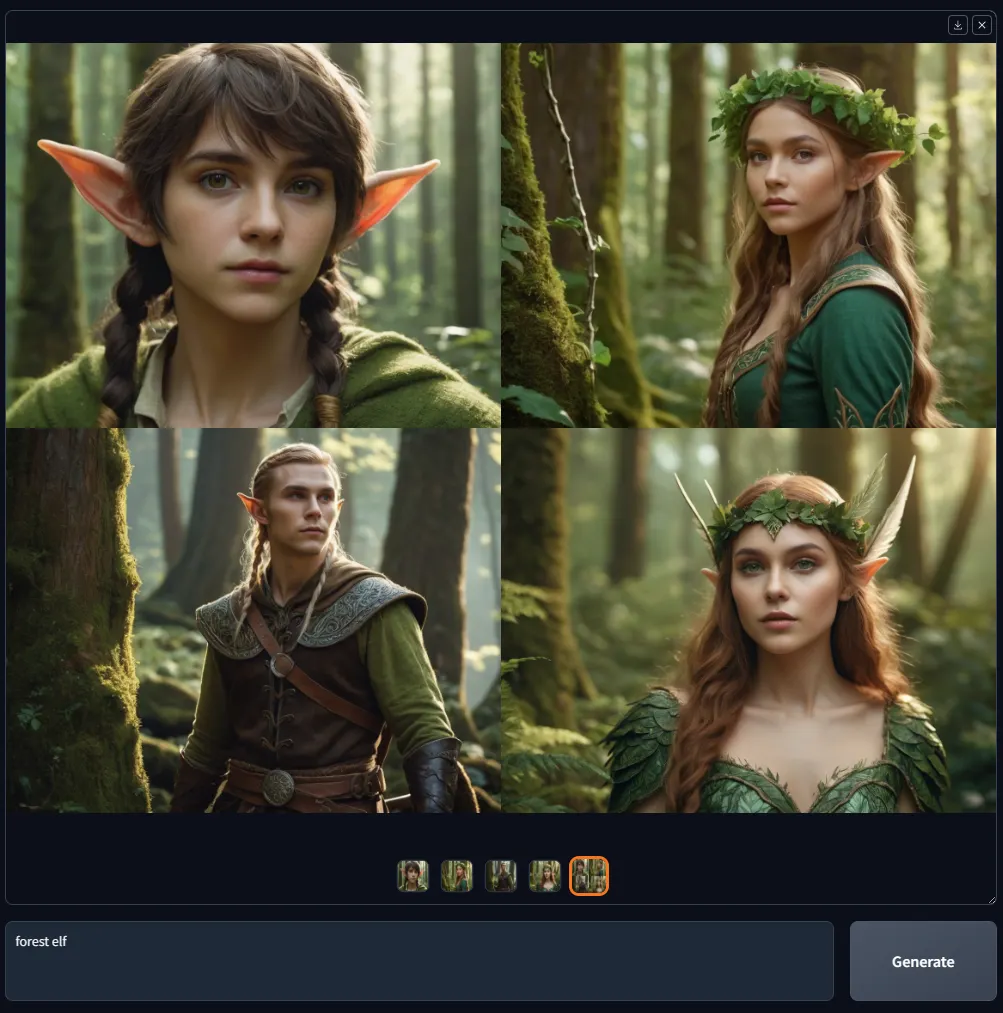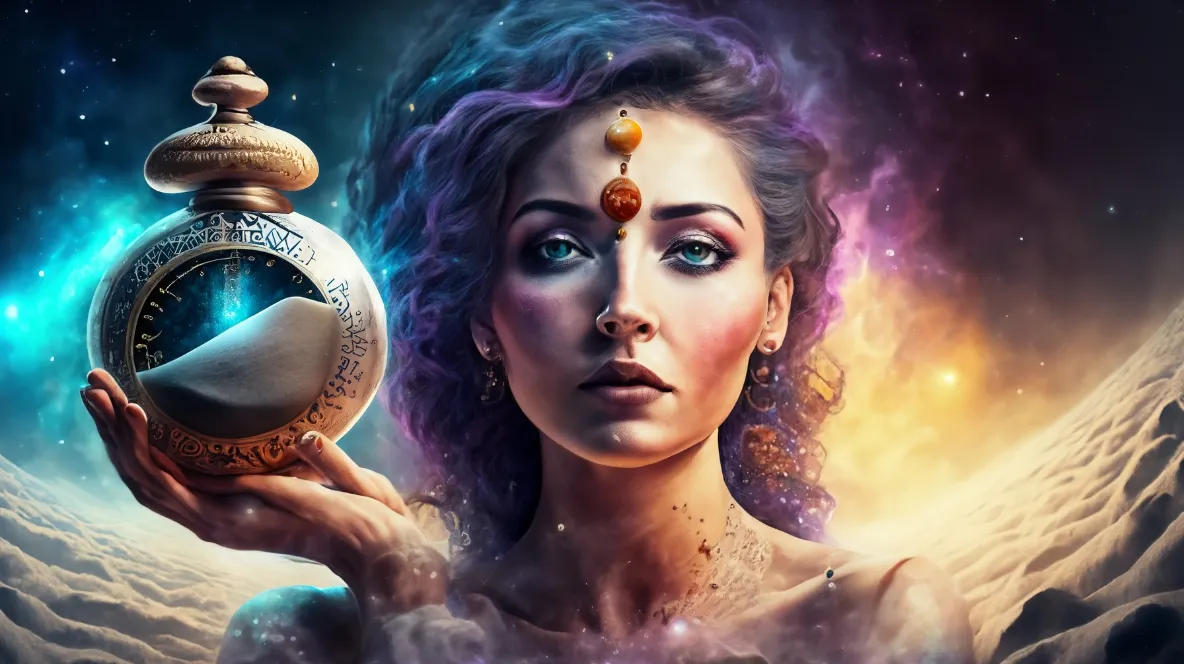MidJourney: Create something nice—anything, really
 Image generated with MidJourney.
Image generated with MidJourney.
High-Quality Imagery: Known for its aesthetic appeal and realism, the images generated by MidJourney stand out for their excellent composition.
Simplicity: The tool works with simple prompts, making it user-friendly for those not well-versed in complex AI interactions.
Inpainting and Outpainting Capabilities: MidJourney offers features like inpainting and outpainting, allowing for creative flexibility in image generation.
Reduced Precision: While the images are aesthetically pleasing, they may not always align precisely with the user’s intent, as the tool takes certain creative liberties.
No Text Generation: Unlike some of its counterparts, MidJourney cannot generate text within images, which could be a limitation for certain users.
Dependency on Discord: The tool operates through a Discord bot, lacking a standalone website, which might restrict accessibility and ease of use.
Limited Adjustability in Editing: Its inpainting and outpainting capabilities, while present, are not as advanced as other tools in the market.
Subscription Cost: At approximately $100 per year, the cost factor might be a consideration for users comparing it with other free or less expensive alternatives.
Content Censorship: MidJourney implements content censorship, which could be a limitation for users seeking complete creative freedom.
DALL-E 3: Talk to your AI as if it were a friend
 Image generated with DALL-E 3.
Image generated with DALL-E 3.
User-Friendly Interaction: Unlike traditional image generators that require specific prompts or instructions, DALL-E 3 allows users to interact conversationally, making it more accessible and intuitive.
High Accuracy and Creativity: It excels in interpreting elaborate ideas, offering a high degree of accuracy in realizing users’ visions.
Text Generation Capabilities: Unique among its peers, DALL-E 3 can incorporate text into its image creations, adding a new dimension to its outputs.
Distinctive Aesthetic: The images generated have a recognizable style, often with a cartoonish flair, making them ideal for certain artistic preferences.
Variants for Different Needs: Available in two versions, DALL-E 3 caters to diverse user requirements. The ChatGPT Plus version is ideal for interactive usage, and the Microsoft Copilot variant offers less censorship.
Flexibility in Image Dimensions: While the Microsoft version offers free access with a limitation to 1024 x 1024 resolution, the ChatGPT Plus variant provides more versatility in image dimensions, albeit at a cost.
Realism Limitations: Despite its strengths, DALL-E 3 lags in creating hyper-realistic images, a domain where tools like MidJourney have an edge.
Censorship Levels: The tool heavily enforces censorship, with the OpenAI version being more restrictive than Microsoft’s. It is probably the most censored image generator today.
Limited Editing Capabilities: Users cannot perform inpainting or outpainting, restricting the scope of image manipulation.
Identifiable Aesthetic: Yes, we put that in the “Pros” too. But this is a double-edged sword. While its distinctive style is advantageous for some, it may not suit all artistic needs, especially for users seeking a wider variety of visual expressions like photorealism or other identifiable art styles.
Stable Diffusion: For control freaks who want versatility
 Image generated with SDXL.
Image generated with SDXL.
Control and Customization: Stable Diffusion is perfect for users who desire full control over their creative process. It allows users to create images precisely as they envision, even extending to the creation of nudity.
Local Running Capability: The tool can be run locally, offering greater privacy and control.
Model Fine-Tuning: Users can fine-tune their models, tailoring the output to their specific needs.
Uncensored and Open: The platform is completely uncensored, providing a vast scope for creativity and expression… It’s the only model that will let you create a nude image of your imaginary waifu
Extensive Custom Models: It boasts hundreds, if not thousands, of exceptional custom models, each excelling in areas like anime, photorealism, 2.5D images, dark styles, etc.
It’s free
Complexity: The requirement for complex prompts, negative prompts, and substantial tweaking can be daunting for beginners.
Time-Consuming: The level of control and customization means users might need to dedicate significant time to master and use the tool effectively.
Requires a PC with a GPU of at least 4 GB of VRAM and 6GB for some models. This can be a problem for people with weaker PCs or laptops with integrated graphics.
Honorable Mention: Fooocus — Bridging simplicity and power
 Non-cherry-picked random batch by just typing two words “forest elf.” Image: Fooocus Github
Non-cherry-picked random batch by just typing two words “forest elf.” Image: Fooocus Github
Leonardo AI: MidJourney pretty, Stable Diffusion power
 Image generated with Leonardo AI
Image generated with Leonardo AI
Variety of Models: Leonardo AI offers various models to choose from, catering to diverse creative needs.
Native Models with Unique Aesthetics: Its native models boast a beautiful aesthetic, comparable to MidJourney, offering distinct and visually appealing results.
Intuitive Interface: The platform is user-friendly, making it an excellent choice for beginners or those new to Stable Diffusion technology.
Daily Credits in Free Version: Users get 150 generation credits daily with the free version, allowing regular use without immediate cost.
Versatility: Leonardo AI is versatile in its applications and suitable for various image generation needs.
Limited Capabilities in Free Version: The free version restricts access to advanced features like Alchemy and PhotoReal, limiting the quality and realism of generated images.
Credit Consumption Based on Operations: Different operations consume varying amounts of credits, with high-resolution images costing more, which might limit extensive use for free users.
Exclusive Models Not Publicly Available: The platform’s most aesthetically unique models are not available to the public, limiting access to some of its best features.
Censorship in Models: Despite using uncensored models, Leonardo AI maintains censorship, which might restrict the creative freedom of users.
Adobe Firefly: Stock images with one click
 Image created with Adobe Firefly
Image created with Adobe Firefly
User-Friendly Interface: Adobe Firefly boasts an extremely simple interface. Users can quickly select an area on their canvas and input a prompt to generate images, making it accessible even to those with minimal technical expertise.
Sophisticated Inpainting Tool: While it also functions as a standalone image generator, Firefly excels as an inpainting tool, offering impressive capabilities to refine and enhance existing images.
Integration with Adobe Photoshop: Firefly seamlessly integrates with Adobe Photoshop, allowing users to leverage its capabilities within a familiar software environment. This integration streamlines the workflow for Photoshop users.
Generative Credits System: The tool operates on a generative credits system, providing users with a set amount of image generations and edits, which helps manage and ration usage effectively.
Safety-First Approach in Image Generation: The images produced are identifiable as AI-generated for safety reasons, as it was trained on copyright-free images. This might limit the tool’s appeal to users seeking more organic, less discernible AI-generated images.
Extreme realism in stock image generations: This tool produces great results with humans in generations that require that specific look, surpassing even the best Stable Diffusion checkpoint for that specific use case.
Limited Standalone Capabilities: As a standalone image generator, Firefly may not be as robust compared to other tools that specialize solely in image generation.
No Conversation Understanding: Unlike some advanced AI tools, Firefly does not understand conversational prompts or negative prompts, which might limit creative flexibility.
Requirement of Internet Connection: The tool requires an internet connection to function, which could be a limitation for offline usage.
Extreme Content Censorship: Firefly has a heavy censorship mechanism in place. For instance, inputs like “Dogecoin” or “bikini” violate its usage rules, which could be restrictive for certain creative endeavors. So if you work for Victoria’s Secret or want to generate a bikini with this tool, good luck with that.
Generative Credits Limitation: The reliance on a generative credits system means that users have a capped number of uses, potentially limiting extensive experimentation or professional use.
Amazon Titan: When Firefly is not enough
 Image generated with Amazon Titan
Image generated with Amazon Titan
High-Quality Realism: Amazon Titan boasts a level of realism akin to Adobe Firefly in stock images, making it suitable for projects requiring high-fidelity images.
Customization Capabilities: Drawing from the flexibility seen in Stable Diffusion, Amazon Titan allows users to tweak images more intricately than with Firefly, offering greater creative control.
Versatility: Its ability to combine the realism of Firefly with the customization options of Stable Diffusion makes it a versatile choice for a wide range of image generation needs.
Free Version Available: There is a free version of Amazon Titan, which can be appealing to those wanting to try the service before committing financially.
Complex Setup: To use Amazon Titan, users must navigate the complexity of setting up an AWS account and obtaining permission to use the model, which can be daunting for less tech-savvy individuals.
Censorship: Amazon Titan has built-in censorship, which might limit its use in certain creative contexts or for generating specific types of content.
Unintuitive Payment System: The payment system for accessing the more advanced features of Amazon Titan is not straightforward, potentially causing confusion and inconvenience for users.
Integrated into AWS Interface: Being housed within the AWS interface instead of a standalone site, it might not be as user-friendly for those unfamiliar with Amazon’s cloud services platform, potentially steepening the learning curve.



